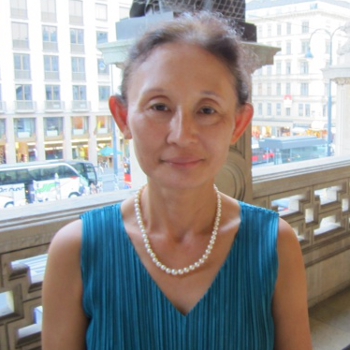Britten’s A Midsummer Night’s Dream is a masterpiece in orchestration. Familiar strings and woodwinds, with heavy percussion contributions, play melodies, both harmonic and free-flowing, which capture the comedic interplay of the celestial and human beings with exquisite beauty and charm. The first several bars at once establish that this is a fairy tale for grown-ups, with glissando strings introducing the world of fairies and their rulers, Oberon and Tytania. Not all is well with their relationship, and Oberon’s attempt to humiliate and recapture his wife’s affection via a magic potion sets off a string of events that ultimately demonstrate that heavenly beings are not so very different from humans with regard to their jealousies and spats. Two young human couples and a troop of working men’s amateur theatricals are thrown into the mix to complicate the plot. Oberon’s servant Puck, a speaking part, serves as a narrator and go-between of the two worlds.
Ted Huffman’s new production gives the performers both a great deal of freedom as well as responsibility with its bare stage of gray walls and slightly raised platform of the same color. Oberon, Tytania, their fairies and Puck are in light gray formal pants suits with cropped hair, their uniformity in appearance emphasizing their otherworldly status. The humans are dressed circa mid-20th century, around the time of the opera's 1960 premiere. Props are few, with a bright large half moon and a ladder dominating an empty stage. Puck descends from – and ascends to – the ceiling suspended by strings, his body often floating in mid-air as he speaks or motions. Only briefly in the last act is the stage transformed with bright red cloth covering the floor and walls for the wedding festivities. The skit of the theater group features two huge puppets of Pyramus and Thisbe that are deftly handled by thee performers including a singer. The production is simple and sparse, and yet whimsical and charming, inviting the audience to concentrate on Britten’s enchanting music and Shakespeare’s clever farce. The sight of many bodies all lying asleep on stage as the curtain opens after the intermission elicited a wave of soft laughter from the audience, who, after the rather sluggish plot development of the first half, was now entranced by the delightful dreamscape of the production.
Donald Runnicles led the Orchestra of Deutsche Oper Berlin with purposeful and strong leadership. Set against soft and shimmering strings, the winds and brass, particularly trumpets, provided comical and charming layers of tonal color and contrast. The percussion, and there were many instruments in the pit, were additional delights, all played with deliberate but joyful tempi. The children’s chorus, singing and acting the role of fairies, was a splendid and enchanting highlight, with their movements deftly coordinated. They sang with beautiful unison and focus, providing a perfect backdrop for the celestial world in contrast to the busier, more syncopated music of the human world.
The singers, many from Deutsche Oper's ensemble, sang with commitment and enthusiasm, throwing themselves into the physical and vocal demands of Britten's opera. As Oberon, James Hall sang with clarity of diction and voice, if not a little underpowered. As Tytania, Siobhan Stagg was more forceful, and displayed a flexible and gleaming voice to dominate the first half of the performance. Among the young lovers, Karis Tucker as Hermia impressed with her beguiling stage presence and warm and sympathetic singing. Gideon Poppe was a tender Lysander, while Samuel Dale Johnson’s Demetrius boomed. Jeanine De Bique’s Helena was vivacious and charming. Among the theater group, James Platt’s Bottom was a standout, with a resonant bass and great comic acting. Actor Jami Reid-Quarrell as Puck bounced around the stage with great energy whilst reciting Shakespeare’s lines. As the trickster, he has the last line, bidding the audience farewell and good night.




